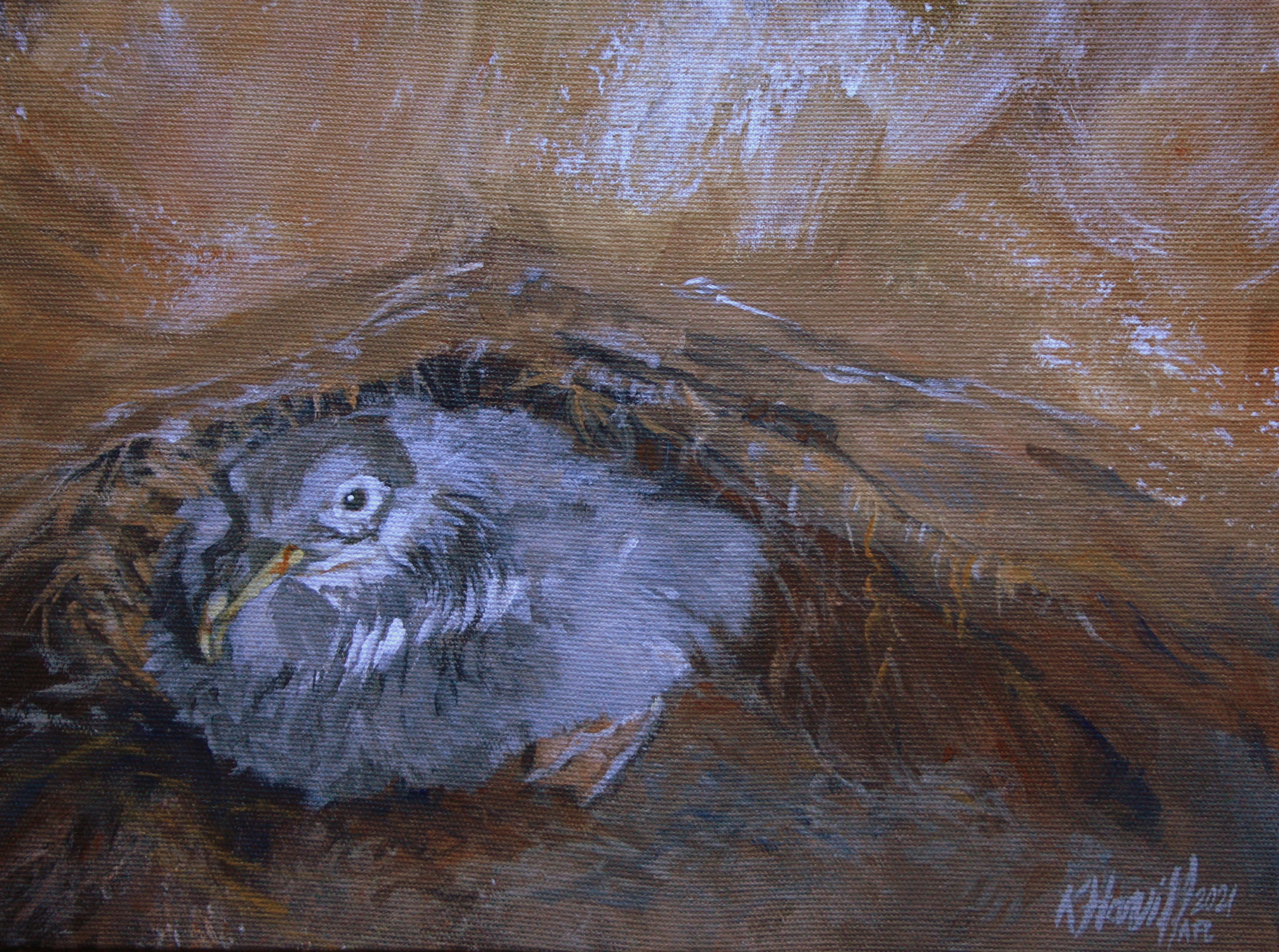A Grey Petrel chick in its burrow, artwork in acrylics by Kitty Harvill for ACAP; after a photograph by Ben Dilley
Jeremy Bird (School of Biological Sciences, University of Queensland, Brisbane, Australia) and colleagues have published open access in the journal Remote Sensing in Ecology and Conservation on studying ACAP-listed and Near Threatened Grey Petrels Procellaria cinerea and Blue Petrels Halobaena caerulea on Australia’s sub-Antarctic Macquarie Island using camera traps.

Camera trap set-up and results: (A) checking Spypoint cameras in a Blue Petrel colony, (B) a Blue Petrel emerging from its burrow, (C) a Recconyx camera outside a Grey Petrel burrow and (D) a Grey Petrel chick close to fledging exercising outside its burrow. From the publication
The paper’s abstract follows:
“Burrowing seabirds are important in ecological and conservation terms. Many populations are in flux due to both negative and positive anthropogenic impacts, but their ecology makes measuring changes difficult. Reliably recording key metrics, the proportion of burrows with breeding pairs and the success of breeding attempts requires burrow-level information on occupancy. We investigated the use of camera traps positioned at burrow entrances for determining the number of breeding pairs in a sample to inform population estimates, and for recording breeding success. The performance of two cameras makes we tested differed markedly, with Spypoint Force 10 trail cameras prone to malfunction while Reconyx HC600 Hyperfire cameras performed well. Nevertheless, both makes yielded season-long activity patterns for individual burrows, eliminating uncertainty around successful fledging attempts. Dimensionality reduction of activity metrics derived from camera time series suggests breeding and non-breeding burrows may be identifiable using linear discriminant analyses but sample sizes from our trial were low and group means were only significantly different during certain breeding stages (permutational multivariate analysis of variance: early chick-rearing f = 3.64, P = 0.06; late chick-rearing f = 8.28, P = 0.009). Compared with traditional techniques for determining burrow occupancy (e.g. manual burrow inspection and playback of conspecific calls at burrow entrances), camera traps can reduce uncertainty in estimated breeding success and potentially breeding status of burrows. Significant up-front investment is required in terms of equipment and human resources but for long-term studies, camera traps may deliver advantages, particularly when unanticipated novel observations and the potential for calibrating traditional methods with cameras are factored in.”
Reference:
Bird, J.P., Fuller, R.A., Pascoe, P.P. & Shaw, J.D.S. 2021. Trialling camera traps to determine occupancy and breeding in burrowing seabirds. Remote Sensing in Ecology and Conservation doi.org/10.1002/rse2.235.

 English
English  Français
Français  Español
Español 